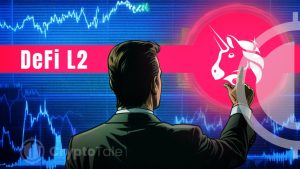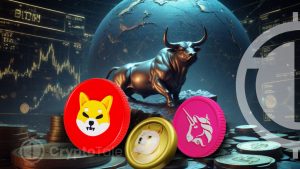
Uniswap is one of the most prominent DEXs, or decentralized exchanges that are reshaping how trading happens without a central party. Uniswap was first established in 2018 and was initially the first platform that adopted the AMM model, which implies the use of liquidity pools instead of the orders book. This model reduces the middlemen thus providing the user total control of the transactions.
What is Uniswap?
Uniswap is an automated market maker built for trading Ethereum tokens. It works via the Ethereum blockchain and is compatible with every ERC-20 token in existence. Also, unlike other exchanges, Uniswap is utilizing an automated market making system that enables users to transact directly from their wallet. It also eliminates the middlemen making it a trustless, permissionless trading platform.
One of Uniswap’s key innovations is its use of liquidity pools. The pools are filled by the contributions of the users and are used to facilitate token swaps. Liquidity providers (LPs), thus, get rewarded for supplying assets with a percentage from the transaction fees. Such a system allows continuous trading throughout a day without the need for buyers and sellers to match the orders.
Automated Market Maker (AMM) Model
Instead of an order book model, Uniswap operates with an Automated Market Maker (AMM) model. As in most order books exchange, buyers and sellers list their prices and make deals when the prices coincide. This system particularly depends on liquidity and certain problems may occur if there are no orders in a market.
AMMs solve this problem by using liquidity pools. Instead of waiting for a buyer or seller, users trade directly against a pool of tokens. It utilizes a mathematical model for deriving the prices of the assets in conformity with the compositions of the pool. This system offers a constant flow of operating capital making it easier for users to execute trades at any single time.
Uniswap’s AMM model uses the formula: x * y = k. Here, x represents one token in the pool, y represents another, and k is a constant. When a user swaps one token for another, the ratio between the two changes, altering the price. This simple yet effective approach ensures trades are executed smoothly without relying on market makers.
Uniswap Labs Launches Unichain to Revolutionize DeFi TradingLiquidity Pools and Providers
Liquidity pools are central to Uniswap’s operations. Each pool has two tokens, and depositing a similar value of both tokens is allowed, in order to offer liquidity. In return they get liquidity tokens, which is a share of the pool. These tokens can be cashed in at the original amount of money invested/depicted and any profits it earned during the time of providing liquidity.
Uniswap operates on a model that allows a fee of 0.30% of all trades to go directly to the liquidity providers. This makes users want to supply to liquidity pools, where they earn some profits out of their investment. Liquidity providers can also pull out their money at will, in addition to the fees which have been made.
Without any exception, any holder of an ERC-20 token has a right to become a liquidity provider in Uniswap. It is very easy and no permissions are needed before starting the process. This accessibility has made the system popular with all types of users that include individual traders as well as institutions.
Uniswap Versions: V1, V2, and V3
Uniswap has had multiple versions since its creation and each of the versions has been an enhancement of the other.
Uniswap V1
Uniswap V1 was introduced in November, 2018 as the first DEX using the AMM model. Originally, it enabled the swapping of ETH for other ERC-20 tokens using liquidity pools. V1 adopted the concept of liquidity providers and opened up the part of decentralized trading without order books.
However, V1 had some limitations. It only supported ETH-ERC20 pairs, meaning users could not directly trade between two ERC-20 tokens. Despite this, it laid the foundation for future improvements.
Uniswap V2
In May 2020, Uniswap launched V2, addressing many of the limitations of V1. One of the most significant upgrades was the introduction of ERC-20 to ERC-20 trading pairs. This allowed users to trade tokens directly without converting to ETH first. V2 also introduced several other features, including price oracles and flash swaps, which enabled more complex trading strategies.
The price oracles in V2 provided a secure way to measure asset prices on-chain, reducing the risk of price manipulation. Flash swaps allowed users to withdraw assets from liquidity pools without providing upfront capital, as long as they returned the tokens by the end of the transaction.
Uniswap V3
Uniswap V3 which was released in May 2021 was an improvement in decentralized trading. With V3, concentrated liquidity was presented, meaning that consumers select the desired price range for providing liquidity. This enhancement has made liquidity more effective for the company, which not only improved capital allocation but also avoided slippage during trading.
With concentrated liquidity, LPs no longer needed to provide liquidity across the entire price range. Instead, they could focus on specific price points, increasing their returns. This feature significantly improved Uniswap’s capital efficiency, making it more attractive for liquidity providers.
What is Liquidity? A Guide to Understanding Market LiquidityUniswap V4: The Future of Decentralized Exchanges
In June 2023, Uniswap launched the fourth protocol version, known as Uniswap V4. V4 introduced the concept ‘hook,’ enabling developers to add new functionalities to the elements of liquidity pools. This makes V4 more flexible than versions prior to it and opens up a wide range of applications.
V4 also brought improvements in gas efficiency. Previous versions required multiple transactions for complex swaps, which increased gas costs. V4 streamlined this process, reducing the amount of gas needed for transactions. As Ethereum gas fees remain a concern for many users, this improvement makes Uniswap more accessible to smaller traders.
With V4, Uniswap continues to lead the decentralized exchange space, offering more customization and efficiency than ever before.
UNI Token: Governance and Utility
The Uniswap platform launched its own token known as UNI in September 2020. A major function of the UNI token is that it governs the Uniswap protocol. UNI holders can also introduce and pass decisions regarding on-chain improvements, modifying fees, enhancing the protocol, or distributing treasury assets.
UNI holders get to decide how the platform is run based on the number of tokens they possess. Through decentralized governance, the community is involved in future decisions. While other exchange services are managed by a few people, this technology gives power to the customers.
Beyond governance, UNI also serves as a reward for liquidity providers. Users who contribute to liquidity pools can earn UNI tokens, giving them a financial incentive to participate in the platform.
Advantages and Challenges of Uniswap
Uniswap has several benefits which really makes it popular among users. First, it offers a decentralized environment where customers can trade tokens without having an account or requesting permission. This makes it accessible to users worldwide, regardless of their location or background.
Second, Uniswap’s AMM model ensures continuous liquidity, solving the liquidity issues that often affect centralized exchanges. Traders don’t need to wait for a counterparty to match their order, as they trade directly against a liquidity pool.
However, there has been a challenge associated with Uniswap. The platform only allows tokens built on the Ethereum network, meaning that you can only invest on the platform if you are holding ERC-20 tokens. Moreover, users also have to bear the transaction fee charges of Ethereum that usually run high during high traffic hours. These fees can make Uniswap expensive for smaller transactions.
Conclusion
From simple ETH-ERC20 exchanges in V1 to concentrated liquidity in V3 or versatile hooks in V4, Uniswap continues to reshape decentralized finance. Due to absence of restrictions, openness for liquidity providers and strong governance by means of UNI token, makes Uniswap a foundational platform within the DeFi space. Since its creation, future development of decentralized finance is expected to be associated with the given platform.














